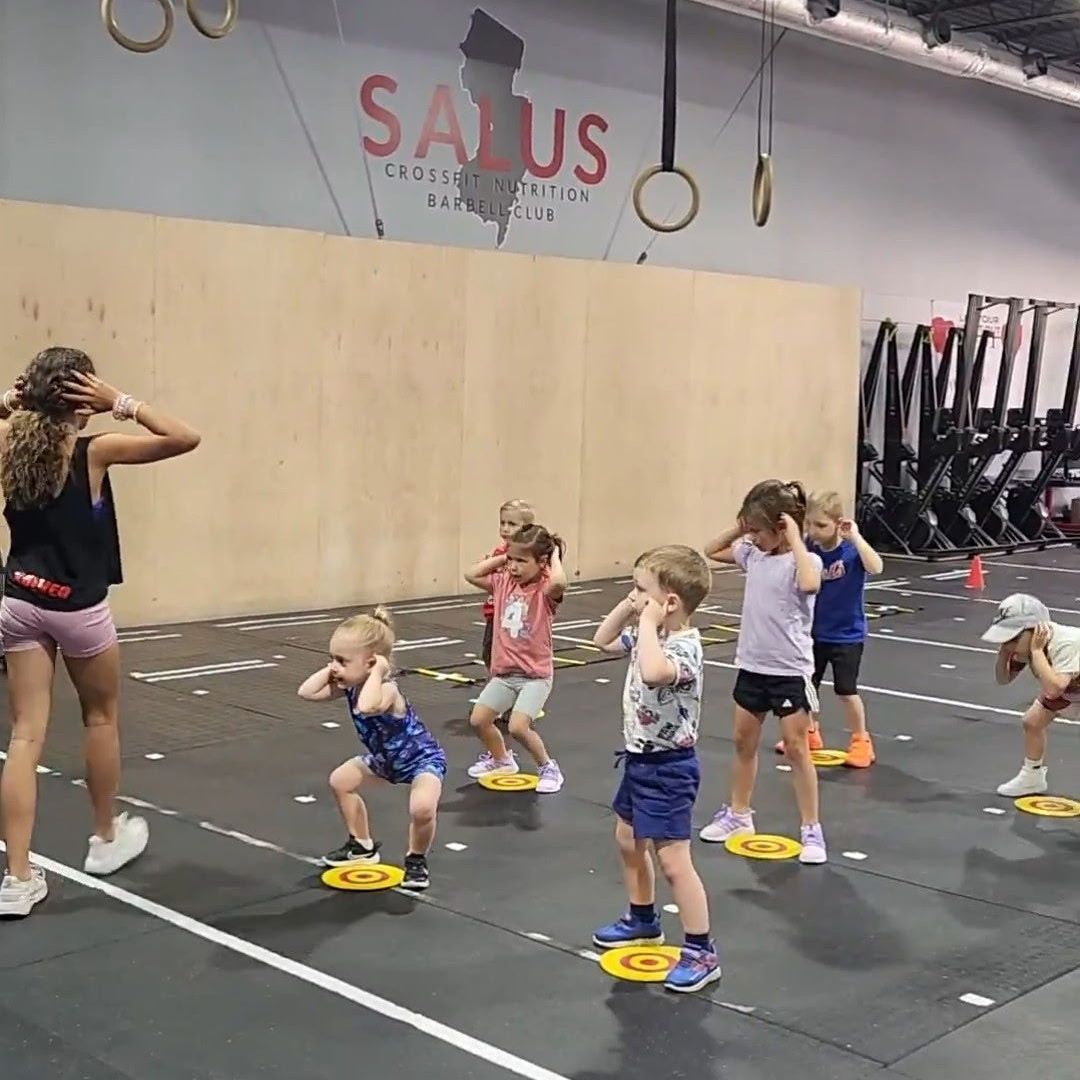Nutrition Challenge Food List
Here’s What You Need to Know
If you feel like your diet could use a reset, you’ve come to the right place. For most of us, our balance gets thrown out of whack, right around the holidays. If you’re craving some structure back in your life, check out our nutrition challenge food list as a guide to help you get back on track.
It’s time to fuel up on the right stuff and ditch added sugars and ingredients you can’t pronounce.
Why Real Food?
At Salus Nutrition, we believe that all foods can fit into a healthy diet. But, every once and awhile, we all need a little healthy-eating reset. So, we encourage you to put your focus on whole foods and cut waaaay back on processed junk. Over this time, we bet you’ll start eating healthier (because you want to, not because you have to), feeling better, sleeping better and managing stress better.
I believe no other change will impact your life as profoundly as changing your mindset when it comes to what you eat.
Unlike super-restrictive diets or detox promises, our challenge doesn’t cut out certain healthy foods like oatmeal, potatoes and even alcohol in moderation. Our challenge means embracing whole, natural foods like vegetables, fruits, sustainable meats, healthy fats, and even health alternatives like brown rice pasta. You’ll learn to read labels and decipher the ingredients list as you cut out refined grains, added sugars, additives, unhealthy fats, preservatives, etc.
Are you ready for a reset?
Find out which foods are allowed and which foods to avoid.
We can’t wait for you to RESET with us on this journey!
What Foods Are Allowed? And Why?
Carbs
In case you haven’t heard this before:
Carbs are not the enemy.
Fruits and Veggies
Some people tend to shy away from fruit because they’re higher in sugar than other foods. With the craze of Keto , it can be confusing. This is applicable in some instances, however, since the sugar from fruit is all natural and combined with fiber, vitamins and minerals, it’s a great idea to include about 2 cups of fruit in your diet daily.
When it comes to veggies, the more the merrier! Did you realize that close to 90% of Americans don’t get the recommended 2 ½-3 cups of veggies a day? Besides, they’re jam-packed with micronutrients, making them a solid carbohydrate choice!
Tip: Stick to the perimeter of the grocery store where you’ll find fresh fruits, veggies and meats and you’ll naturally skip over the processed junk anyway.
When it comes to whole grains. No need to shy away. Oats, brown rice, quinoa, amaranth and buckwheat are whole grains that have been minimally processed to get to your plate. Choose these options first. But sprouted grain bread and brown rice pasta (with simple ingredients and no added sugar) are also allowed on the challenge. Hey, sometimes you just need a piece of avocado toast or a bowl of pasta mixed in with your zoodles and we think that’s OK!
DIY: By replacing the refined grains (white breads, couscous, pastas, etc) with whole grains, you’ll also boost your fiber and as a bonus get more inflammation-fighting phytonutrients, too!
and…
Protein
Protein is essential for building muscle and helps to keep your skin and hair healthy. It also helps to keep you feeling full. Opt for grass-fed, pastured, organic and wild sources of skinless protein such as beef, pork, chicken, turkey and seafood. Vegetarian proteins like eggs, organic yogurt, beans and nuts fit as well.
If you suspect that you have a dairy intolerance, we suggest that you omit dairy for the challenge completely. But, if you know that your gut does just fine with dairy, opt for organic cheese, yogurt and milk, grass-fed butter, etc.
Omit protein bars and powders that have added sugar (and other questionable ingredients). Look for clean alternatives like RX bar, Lara bar, EPIC bar, and Jones bar.
Fats
If you’re a child of the 80’s you probably have a hard time friending fat. So, in case you haven’t heard this before:
Fat doesn’t make you fat!
Fat not only helps you feel full and adds flavor to food, it helps your body to absorb fat-soluble nutrients. Unlike water soluble vitamins (B & C) Fat-soluble vitamins (A,D,E & K) mean that they can only be dissolved and absorbed by the body in the presence of fat.
The keys to remember about fat? Choose healthy fat options like avocado, olive oil, coconut oil, nuts, olives, salmon, etc. And choose the right amount. Moderation is important because fat is more energy dense than proteins and carbs.
Avoid partially hydrogenated oils (which are trans fats), and industrial vegetable and seed oils, including soy, corn, peanut, sunflower, safflower, or canola oils. Trans fats are literally man-made fats to keep products “fresh” for months on end. Margarine and vegetable shortening contain trans fats, both are ingredients used in a ton of fast foods and processed foods (like chips, cakes, crackers, cookies).
15 Healthy Packaged Foods Swaps
Yes, we want to eat as many whole, fresh foods as possible. But not all packaged foods are off limits. Sometimes, it’s just opening up a bag of plain oatmeal or a grab-n-go option like an Lara bar (that only has three ingredients). Other packaged food swap ideas:
- Instead of a seemingly healthy Nature Valley Granola Bars (ingredients: Whole Grain Oats, Sugar, Canola Oil, Rice Flour, Honey, Salt, Brown Sugar Syrup, Baking Soda, Soy Lecithin, Natural Flavor), opt for a Larabar (Dates. Almonds. Walnuts. Cocoa Powder. Sea Salt.) or an RX bar (egg whites, nuts, date).
- Instead of regular pasta (ingredient semolina flour- a refined white flour with minimal nutrients) opt for brown rice pasta (brown rice, water) or mix in zucchini spiralized.
- Instead of microwave popcorn with hydrogenated oils, pop your own on the stovetop with coconut oil and sea salt.
- Instead of sugar-filled oatmeal, buy plain oats to cook in batches, store and sweetened with a mashed banana or frozen berries.
- Instead of Aunt Jemima pancake mix (ingredients: enriched bleached flour (bleached wheat flour, niacin, reduced iron, thiamin mononitrate, riboflavin, folic acid), sugar, leavening (sodium bicarbonate, sodium aluminum phosphate, monocalcium phosphate), salt, calcium carbonate), opt for Birch Benders Paleo pancake mix (cassava flour, organic coconut flour, almond flour, eggs, leavening, salt, monk fruit, spice.)
- Instead of Old El Paso Taco Shells with Palm oil, go for Grain Free Siete Taco Shells made with avocado oil.
- Instead of Skippy peanut butter, choose raw cashew butter with no sugar added (yes, even if that means you have to stir it up)
- Instead of soy sauce, opt for Coconut aminos.
- Instead of cream in your coffee, try coconut milk or Nutpods nondairy unsweetened creamer.
- Swap jelly for dried fruits or mashed bananas or blueberries.
- Swap out your Slim Jim for CHOMPS, Snack Sticks or Epic bars – all made with grass-fed beef or free-range turkey.
- Avoid Miracle Whip, swap that out for Primal Kitchen mayo made with Avocado oil!
- Instead of table salt, choose Himalayan salt.
- Instead of margarine, choose Kerrygold grassfed butter or coconut oil.
- Instead of flavored yogurt, buy plain organic yogurt (or nut based yogurt) and sweeten it yourself with fruit or a drizzle of honey.
But, if you turn over a package and can’t pronounce anything on the ingredients list, put it back. This is exactly why it’s so important to read labels diligently on all packages.
What About Sugar and Other Foods?
Sorry…not sorry. No more added sugars. Yes, you can last a few weeks without it. Plus, you’ll have the chance to reset your taste buds and realize that you don’t need it anyway. Besides, too much added sugar is bad for you anyway (duh).
The only source of sweetener should come from whole foods: fruit, stevia, monkfruit or coconut sugar. Honey & real maple syrup is also allowed in moderation (no more than 1tbsp twice a week).
Table sugar, high fructose corn syrup and all other artificial sweeteners are not compliant. READ LABELS!
Ask Yourself These 3 Questions First
Before you buy any food that comes in a package, ask yourself:
- Do the ingredients come from real foods?
- Are the ingredients necessary? This is one reason why making as much of your own food at home is important. When you know how to make your own salad dressing, for example, you know that many of the extra fillers (like sugar) are not necessary.
- Are the ingredients on this list as nutrient-dense as possible ?
With answers to these questions, it’s easier to find healthy swaps.
Realize that our food list is not exhaustive. We can’t possibly fit all the foods you can eat on paper. If you look at the food list, you’ll realize that much more is allowed than is not allowed. I’m sure more foods will come into question. Don’t hesitate to ask us in person or on the Facebook page for clarification.
Levels
We recognize that everyone starts from a different place, which is why we implement different levels so everyone can participate and feels accomplished.
Every day, you will have the opportunity to make small steps in the right direction by making just one positive change (1 point).
Push yourself a little further by sticking to the food list for at least two meals and two snacks (2 points).
Or go all out and stick to the food list for all meals and snacks (3 points).
Ready to make a change and reset your habits?
Perhaps the most important thing to remember is that the Salus Nutrition Challenge is not about “winning” by being at the top of the leaderboard. It’s about doing the hardest thing possible…taking small and achievable steps into a new healthy lifestyle. By doing this, you’ll be building on each new success, bringing yourself closer to the ultimate goal.
HELPFUL CHALLENGE LINKS
Remember, we’ll be adding a new habit every week – building on your new healthy lifestyle!
Contact me at angela@salusnj.com with any questions!
MORE GREAT RESOURCES
- Taking Control of Cravings and Temptation
- Hangry? We’ve All Been There
- Nutrition for Teens
- Macronutrients for Energy Balance
- When Should You Choose Organic?
- Do I Need to Count Macros?
- Control Stress Before It Controls You
- Sleep 101: How much sleep do you really need?
- Eating Out and Staying In Control
- Mindful Eating
- Taking Time for Yourself: Why It’s SO Important
- Endocrine Disruptors: What Are They? How Do I Avoid Them?
- Mobility: Why You Need to Do It
The post Nutrition Challenge Food List appeared first on Salus.





